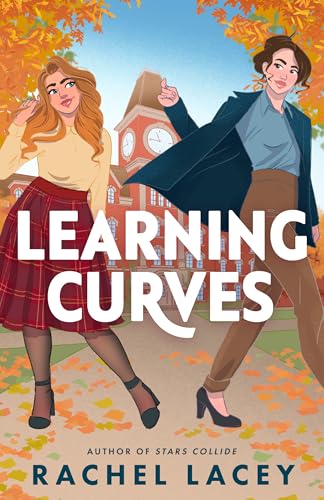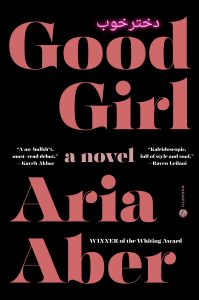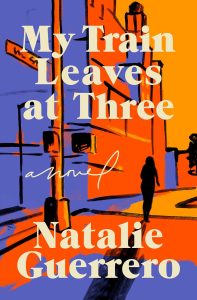
Rachel Lacey’s Learning Curves arrives like a fresh cup of tea on a rainy afternoon, comforting at first sip and then surprisingly bold. Set at Northshire University, this sapphic romance pairs a bright new assistant professor with the prickly mentor she once admired from a classroom seat. It is a story about second chances, academic politics, and the rush of discovering that the person who once sparked your future might also be the person you get to share it with.
The Setup
Audrey Lind returns to her alma mater as an assistant professor, eager to teach pottery and a new Women in Art course. Her former hero, Dr. Michelle Thompson, now sits across the hall. Time has not been kind to Michelle. A painful divorce and stalled tenure hopes have left her guarded, weary, and short on grace. The twist is irresistible, the ex student is now a colleague, the mentor has become a rival, and every hallway run in throws off sparks neither of them wants to acknowledge.
What Works
A genuinely adult love story.
Audrey and Michelle feel like grown women with pasts, flaws, and work that matters to them. Audrey is warm and assured in her craft, a little fearless in the way she names what she wants. Michelle is all intelligence and rough edges, yet Lacey lets us see the ache beneath the armor. Their connection is built moment by moment, through faculty meetings, studio time, tea in offices that smell like old books, and yes, a pottery scene that is every bit as scorching as you have heard.
Slow burn that pays off.
This is a will they or won’t they that respects boundaries and consequences. Lacey threads tension through glances across the seminar table, small acts of kindness, and the professional risks that come with attraction. When the dam finally breaks, the payoff feels earned, both emotional and deliciously sensual.
Art and intellect as foreplay.
One of the joys of Learning Curves is how often the romance happens through ideas. Discussions of women artists, the politics of who gets remembered, and the thrill of teaching are not window dressing. They are part of the chemistry. The novel believes that curiosity is attractive, which makes the relationship feel specific and alive.
A campus that feels lived in.
From the politics around who gets to teach coveted courses to the gossip that circulates through department corridors, the academic setting adds texture rather than cardboard scenery. Supporting characters, colleagues and friends who nudge, tease, and occasionally complicate things, contribute to a sense of community that enhances the central romance.
Where Readers May Hesitate
Early prickliness from Michelle.
Some readers will need a chapter or two to warm up to Michelle. Her initial defensiveness can read as petty, especially when Audrey is so easy to like. The turning point comes once the book lets Michelle own her mistakes and fight for growth, which it does with care.
The power balance question.
While Audrey is no longer a student and both women are colleagues, the story still nods to the sensitivities of mentor turned peer. Lacey addresses the ethics and workplace politics clearly enough, but if power dynamics are a sticking point for you, know that the book tackles them head on.
Heat Level
Make room on the top shelf. The intimacy here is sensuous and character driven. The now famous pottery scene is not just fan service, it is a perfect fusion of craft and desire. Lacey balances explicit moments with tenderness, so the steam amplifies the romance rather than overwhelming it.
Themes That Linger
- Reclaiming confidence after loss. Michelle’s arc is about rebuilding a self that a marriage and an institution had slowly eroded. Watching her step back into ambition and joy is deeply satisfying.
- Belonging through work and love. Audrey’s enthusiasm for teaching is infectious, and the novel honors the way vocation and relationship can feed each other.
- Women in art, and who gets a place in the canon. The classroom threads do more than decorate the plot. They underline the book’s belief in seeing, naming, and championing women’s work, past and present.
Writing Style
Lacey’s prose is warm and clear, with dialogue that snaps and a gentle humor that never undercuts the feelings at stake. The pacing leans measured in the first act, then glides into a smooth acceleration once trust begins to build. Set pieces, from studio sessions to quiet evenings over tea, are crafted with sensory detail that makes the relationship feel tactile.
Who Will Love It
- Readers who crave a smart, character rich sapphic romance with an age gap
- Fans of workplace and academia settings where the politics matter but never swamp the heart
- Anyone who wants steam that grows organically out of intimacy and respect
Content Notes
Divorce, workplace tension, on page sexual content that is enthusiastic and consensual throughout, mild academic politics including jealousy and gossip.
Verdict
Learning Curves is a graceful, grown up romance that believes in the power of art, mentorship, and bravery. Audrey and Michelle are easy to root for, not because fate throws them together, but because they choose each other, again and again, in classrooms and studios and quiet spaces where futures get decided. If you want a love story that is both wholesome and heady, with enough heat to fog the kiln, this one belongs on your nightstand.
My rating: 4.5 out of 5
Buy the Book
Ready to meet Audrey and Michelle and experience that pottery scene for yourself, grab Learning Curves on Amazon: https://amzn.to/3IXRrFo


